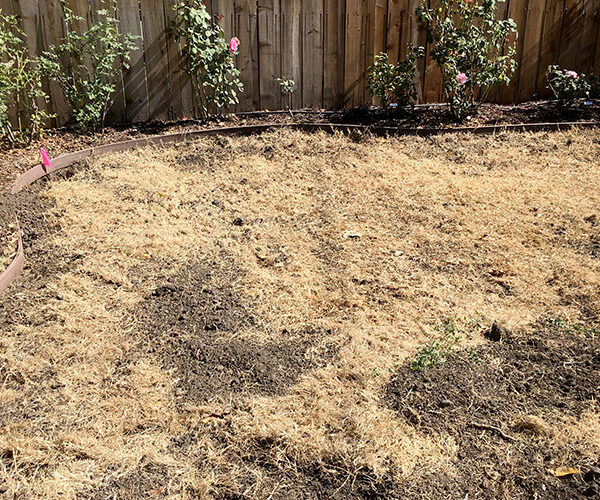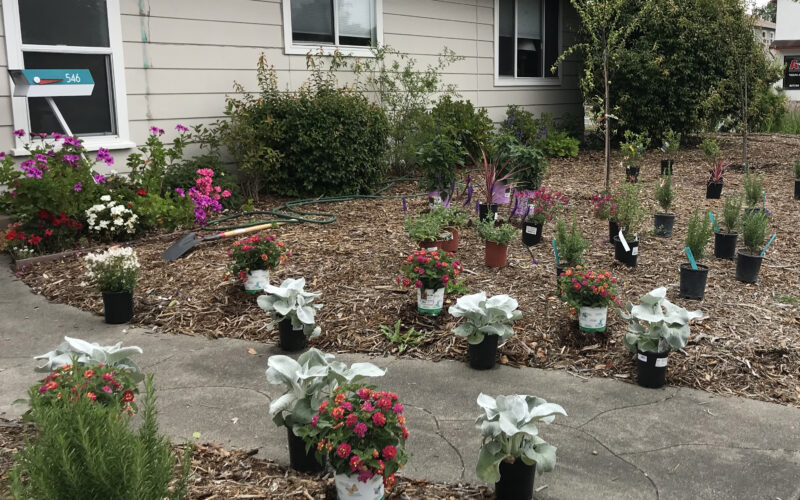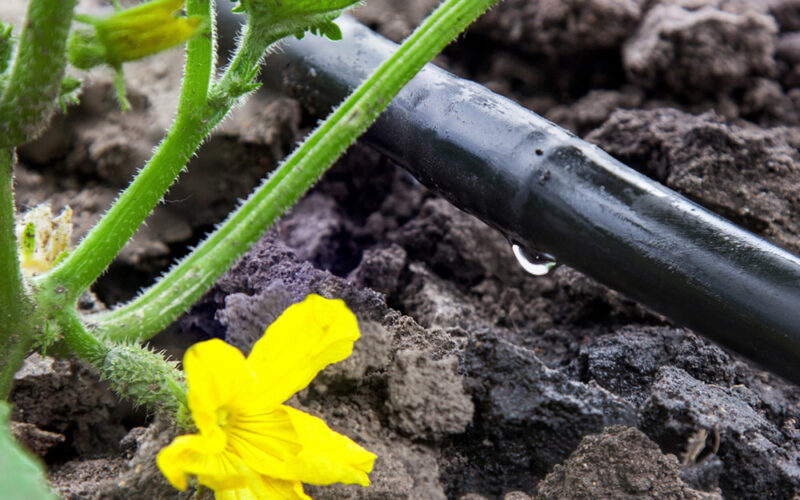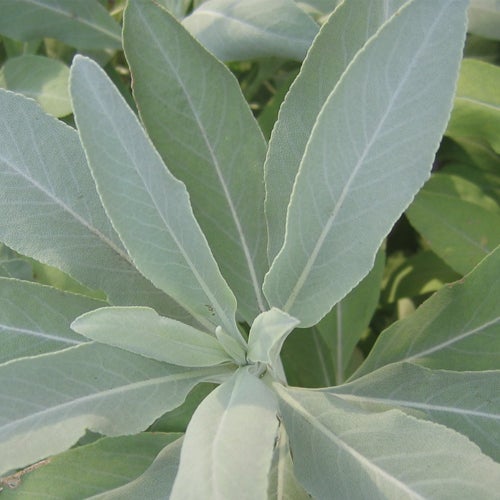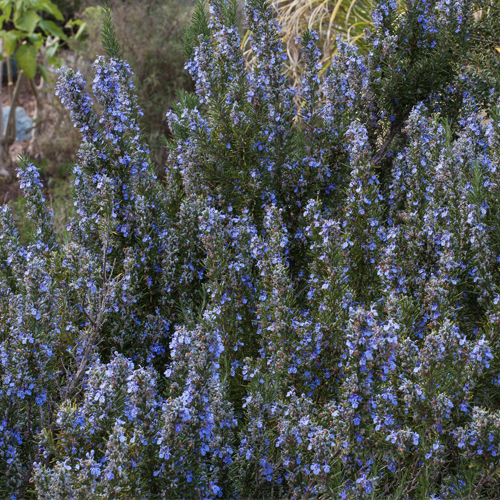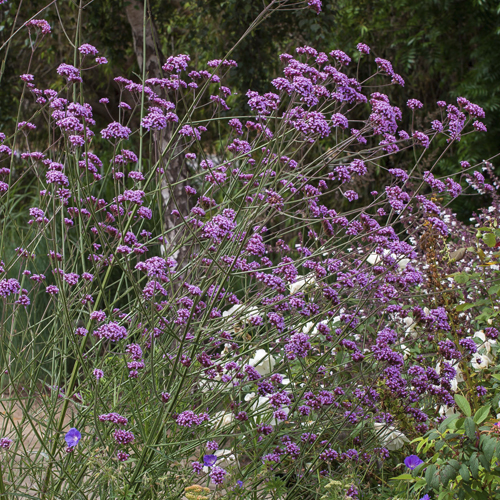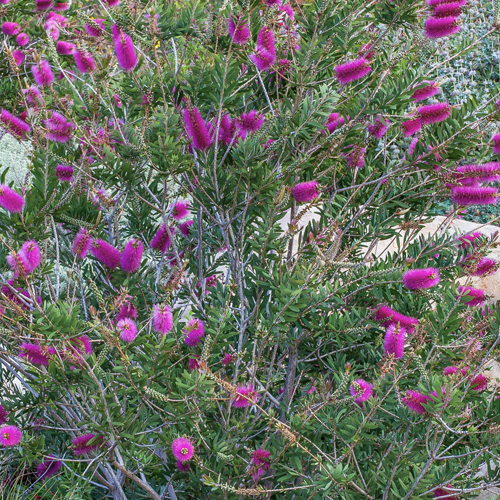From Lawn to Pollinator Paradise
BACK TO FULL TOUR
Garden Features
Drought Tolerant
Edible Garden
Deer Resistant
Drip Irrigation
Pesticide Free
Sheet Mulching
Lawn Conversion
Lawn-Free Landscaping
Wildlife Habitat
During Summer 2020 this garden harvested a bumper crop of vegetables and their first apples, peaches and plums. Most importantly, their garden has become a haven for birds, bees, butterflies and year-round hummingbirds.
The homeowners took part in a series of workshops on landscape design, plant selection, and irrigation hosted by the City of Santa Rosa. With over 1500 square feet of lawn in the front of their corner lot, the first step was to remove dead trees and ailing ornamentals, keeping only a few existing plants. The soil was then prepared to receive crops.
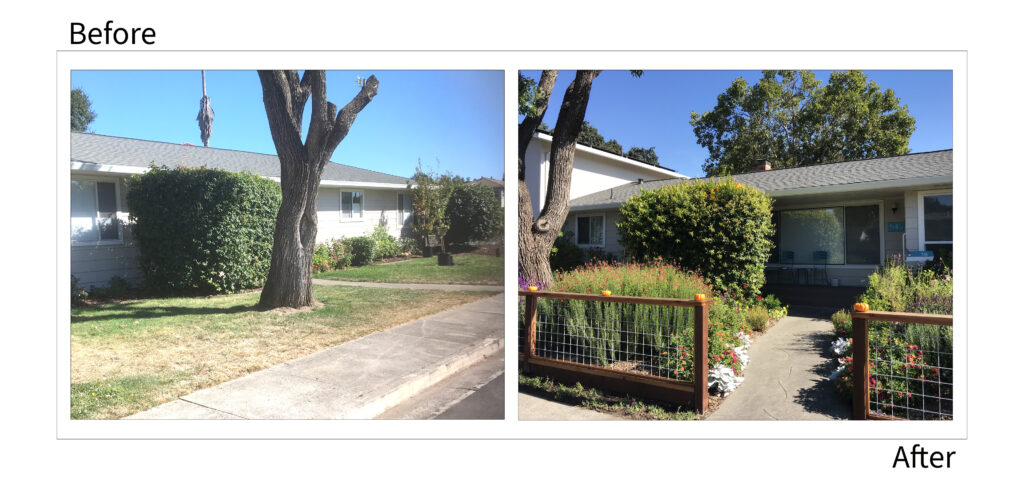
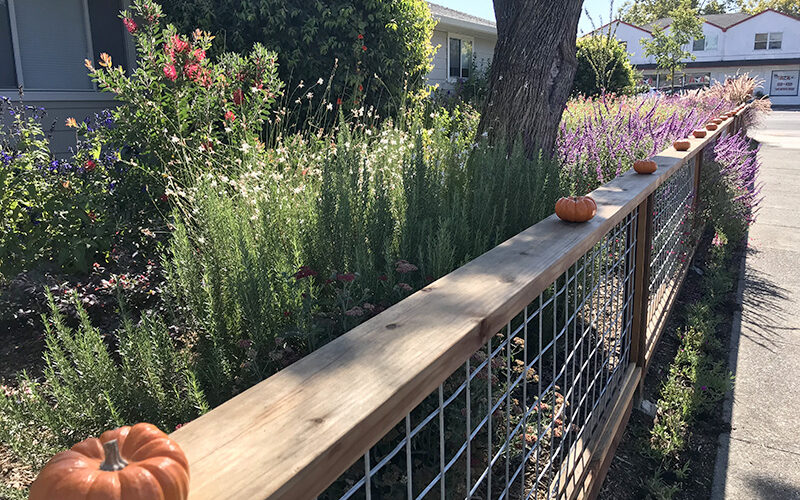
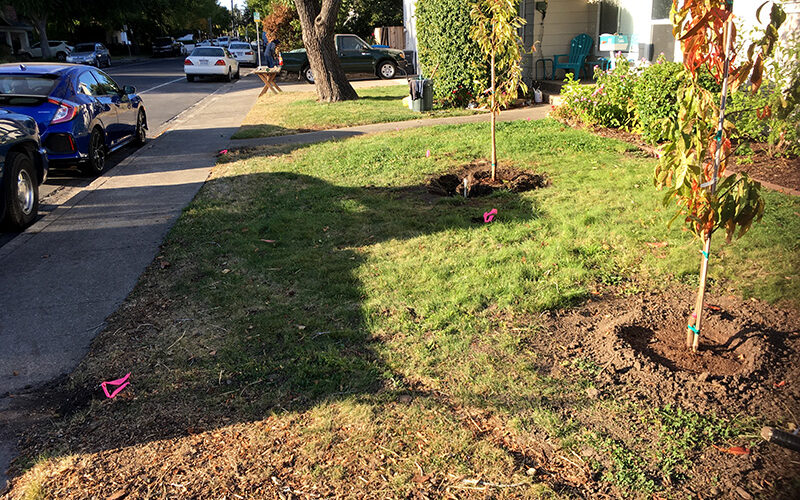
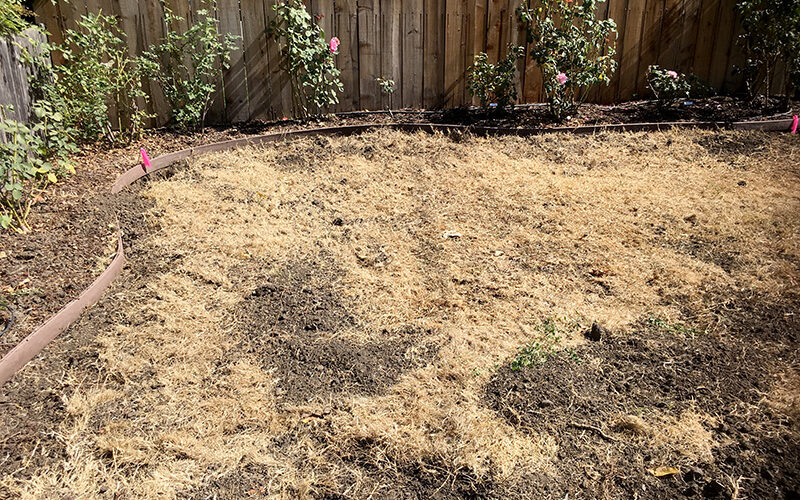
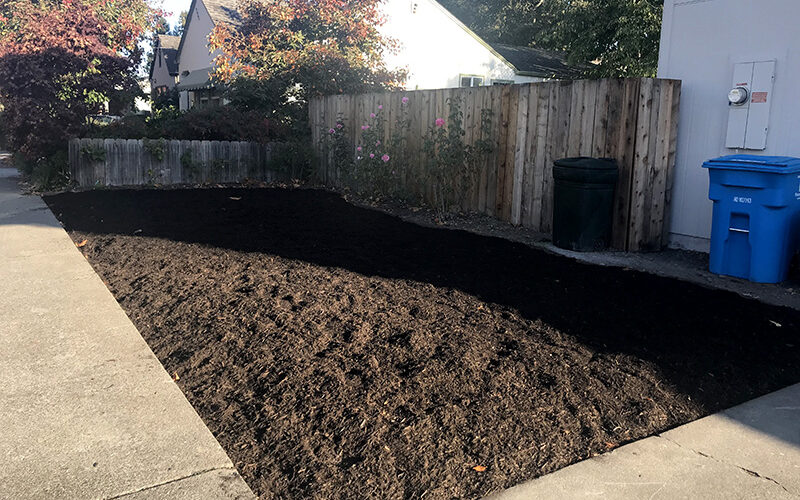
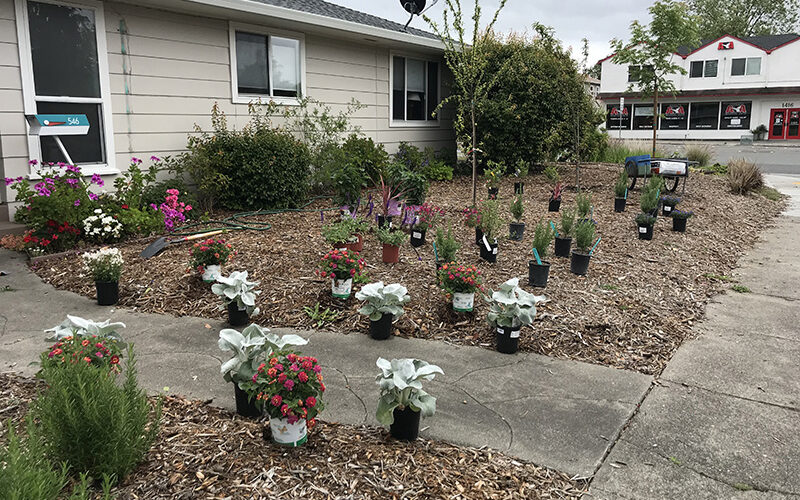
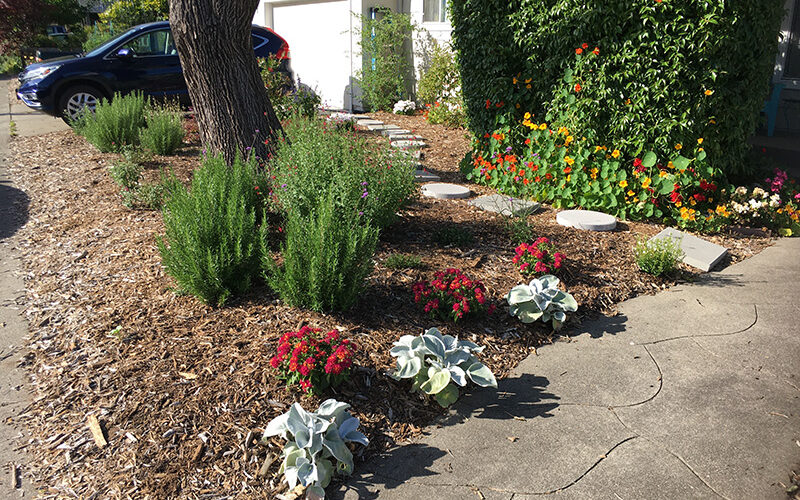
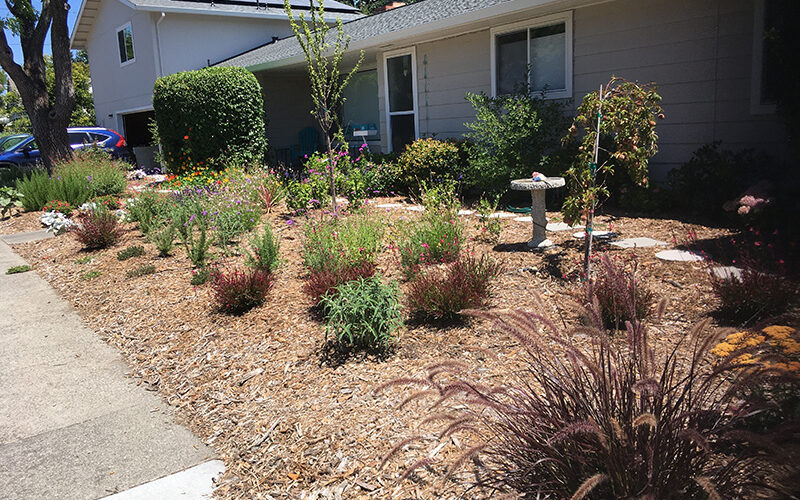
Plants in this Garden
Favorite Plants
Bee Attractors
Rosemary, Salvias and Russian Sage are my favorite varieties for attracting bees.
Butterfly Favorites
Verbena Bonariensis and Red Yarrow are my favorites for attracting butterflies.
Hummingbird Food
Bottle Brush is my favorite plant for providing year round food for hummingbirds.
Favorite Garden Suppliers
Grab N' Grow
2759 Llano Road Santa Rosa
organic compost and arbor mulch
Recommended Resources
Gardening Tips
Thick Mulch Is The Best
Make your mulch thick to get rid of lawn and pernicious weeds. Minimum of 2” compost, 2 layers of clean cardboard, and 4” of arbor mulch (wood chips). Let it sit for 6 months before planting.
